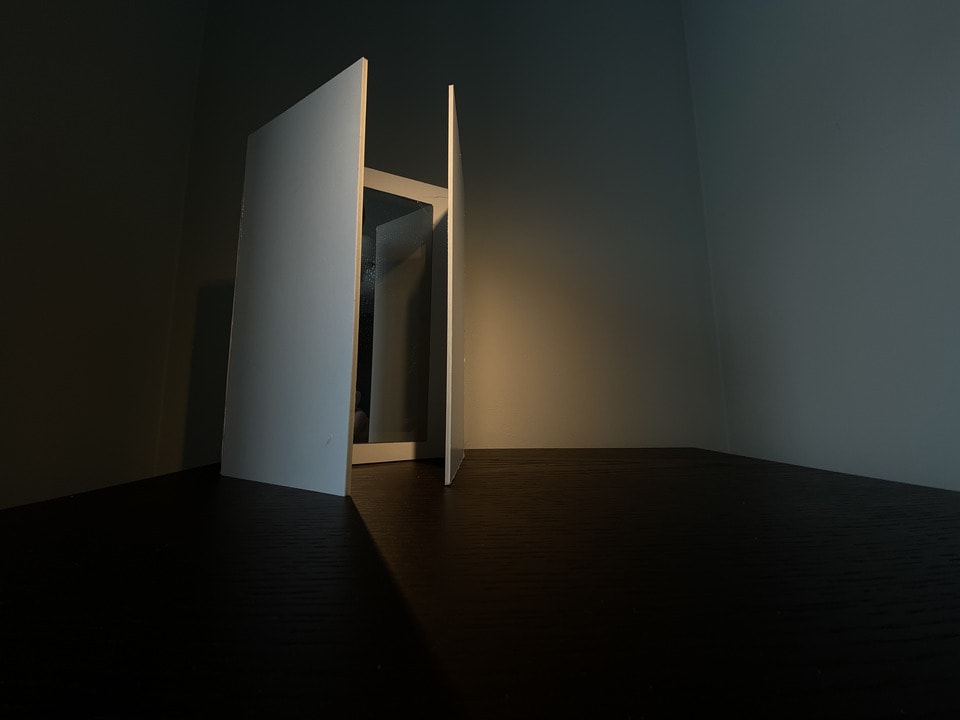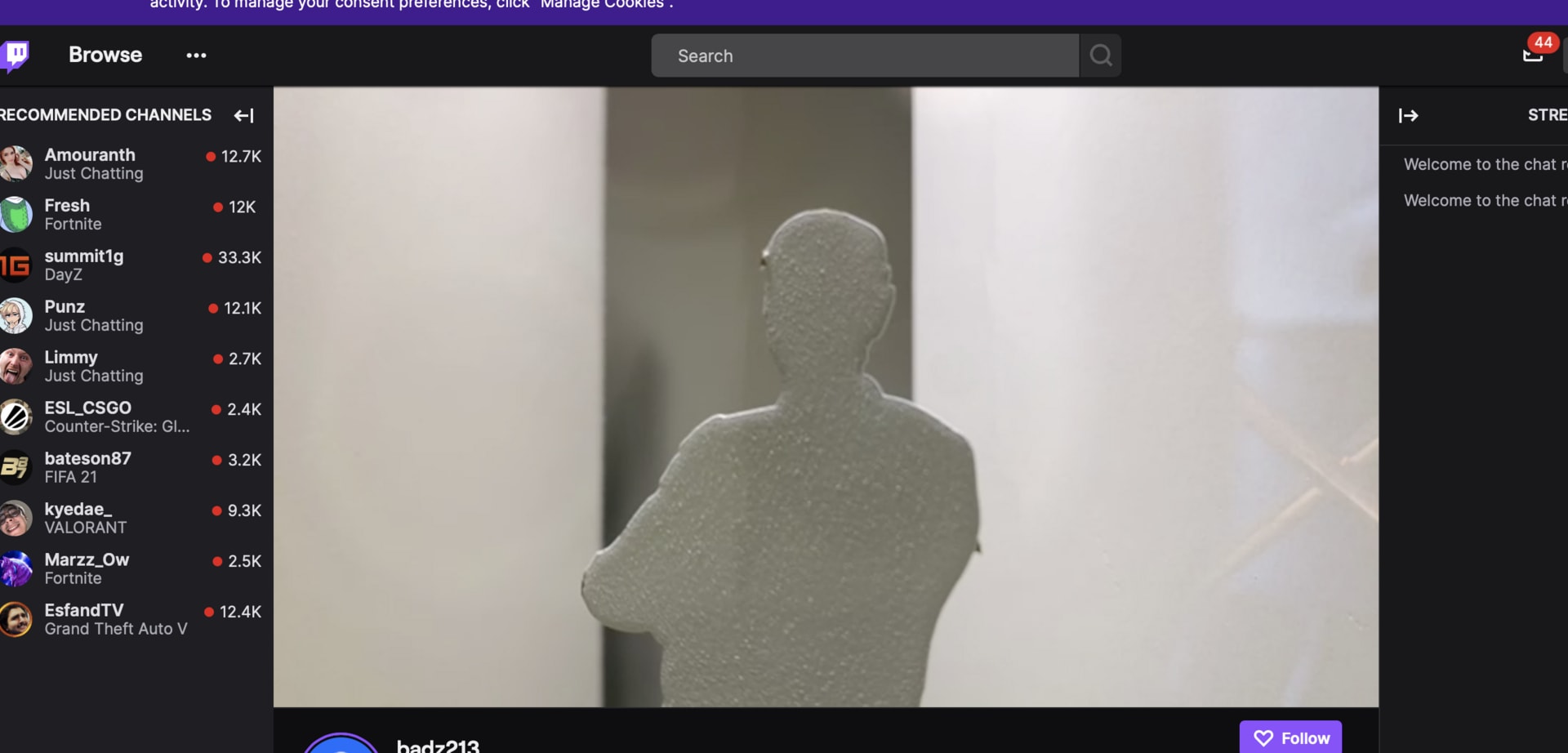I have made interactive work that studies the structure of cybernetic systems, abiding to their controlled relations with an encounter to project how I might come to understand and potentially take hold of the structures of human nature. I achieve this by setting out structures that may only be perceived wholly by way of a certain set of rules that I have configured, as the viewer may come to interact with this work. Using surveillance has enabled me to document a person's introspection, which over time has helped reconfigure these structures to eventually produce an emblematic structure that perfectly reviews the observer’s reaction as I have preconceived. The use of herd mentality was taken into consideration while creating this work for further understanding.
Investigating the practices of artists who evoke issues of surveillance in conjunction with authoritarian systems, the varied uncovered approaches, has reconfigured the systematic approach that acts as the foundation of my practice.
One fundamental piece of research, an essential core of my practice, has been the uncovering of the experimental laboratory, the Panopticon, which studies the modifications of human behaviour within the governed disciplines of surveillance. I began looking at ways in which I can metaphorically use the Panopticon as a tool within my work to further provoke the viewer.
Living in an era which has adapted itself to the onlooking of unknown watchers, my work has come to position itself along this questioning of location and monitoring which confuse the boundaries between being observed and being an observer.
In creating such work that involves surveillance, I have realised that it leaves some viewers feeling vulnerable and unwilling to fully partake in such experimentations. Targeting issues of control to manipulate the viewer raises issues of ethics surrounding surveillance, and raises questions concerning the amount of authority I as an artist have over the control of others. It also opens up the question of how I might problematise power without replicating its problematic nature upon the viewer.
As such boundaries have arisen, I have chosen to consider how the viewer might seize control over being watched or who they may want to observe. By dispersing different formalities of surveillance throughout different locations, using different backgrounds has produced a more ethical grounding, brought about by integrating an element of choice. This is achieved by allowing the viewers to access both positions by exchanging roles, the observer and the observed. My role as an artist is to not seize control over the viewer, but rather to create a surface using methods of control to give authority to the viewer towards other viewers.
This is evident in in a piece called, ‘Watch yourself/Watch others’, where the viewer stands in front of a two-way mirror and a hidden camera. The mirror acts as a reflection of one’s self-image through the gaze of others allowing the viewer to see what the observers see. At the same time, their reflection is then live-fed online for others to see.





![[untitled]](https://res.cloudinary.com/rca2020/image/upload/f_auto,h_2560,w_1798,c_fill,g_auto,q_auto/v1/rca2021/60c399aaa98c7847e5002afd-438243?_a=AXAH4S10)
![[untitled]](https://res.cloudinary.com/rca2020/image/upload/f_auto,h_1440,w_1920,c_fill,g_auto,q_auto/v1/rca2021/60c399aaa98c7847e5002afd-448608?_a=AXAH4S10)
![[untitled]](https://res.cloudinary.com/rca2020/image/upload/f_auto,h_1440,w_1920,c_fill,g_auto,q_auto/v1/rca2021/60c399aaa98c7847e5002afd-459047?_a=AXAH4S10)
![[untitled]](https://res.cloudinary.com/rca2020/image/upload/f_auto,h_1225,w_1920,c_fill,g_auto,q_auto/v1/rca2021/60c399aaa98c7847e5002afd-599419?_a=AXAH4S10)
![[untitled]](https://res.cloudinary.com/rca2020/image/upload/f_auto,h_534,w_1920,c_fill,g_auto,q_auto/v1/rca2021/60c39fbba98c7847e502203e-154530?_a=AXAH4S10)